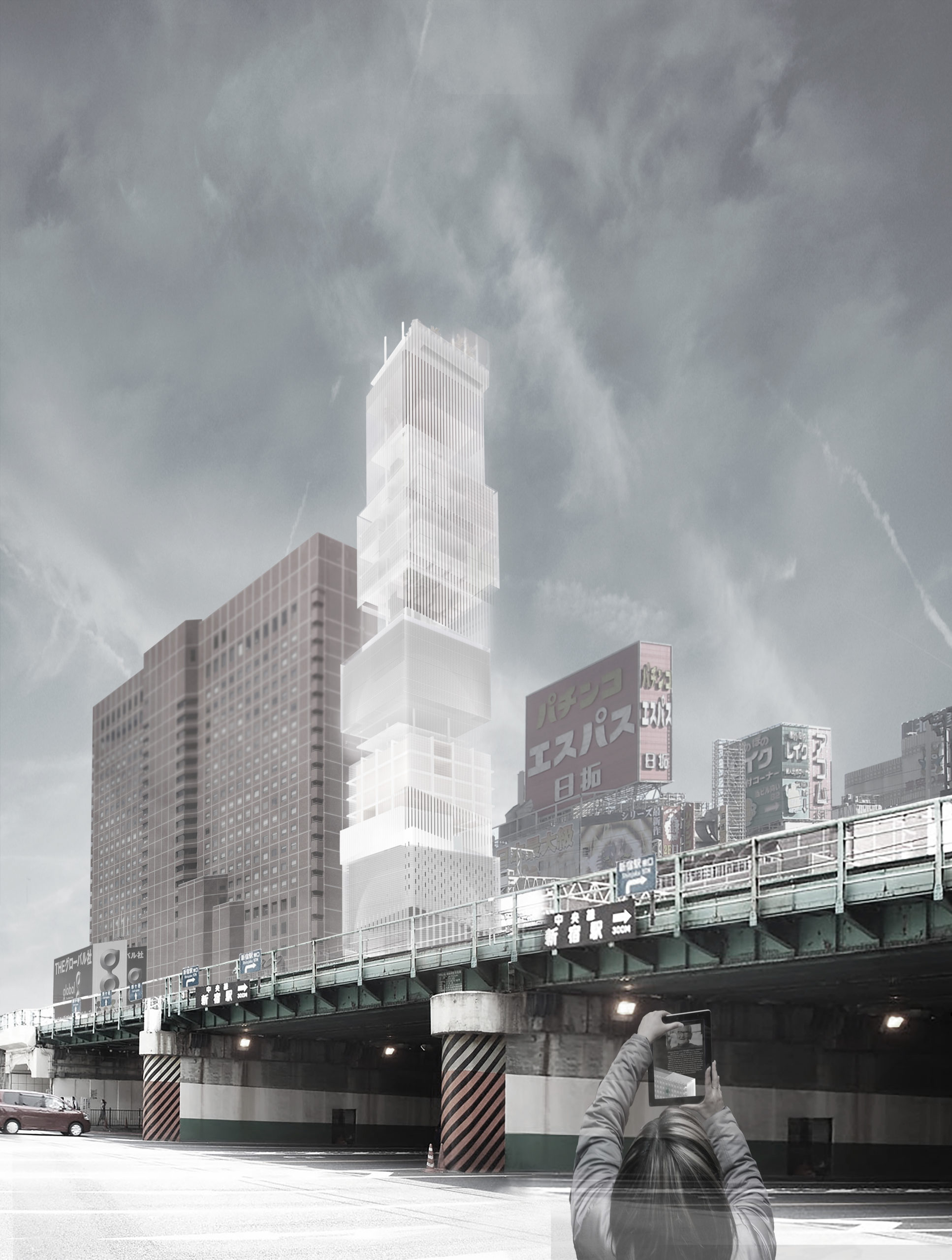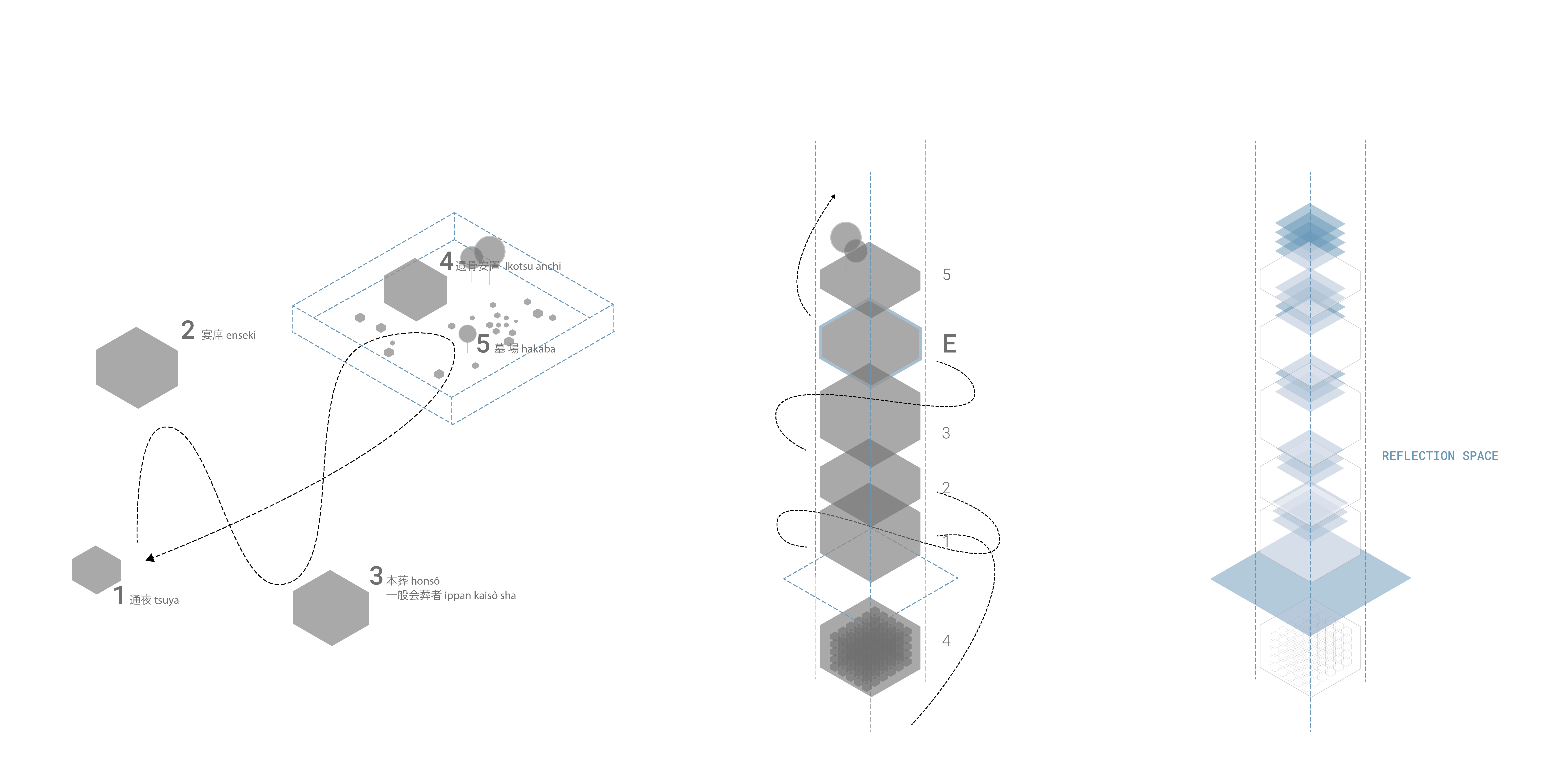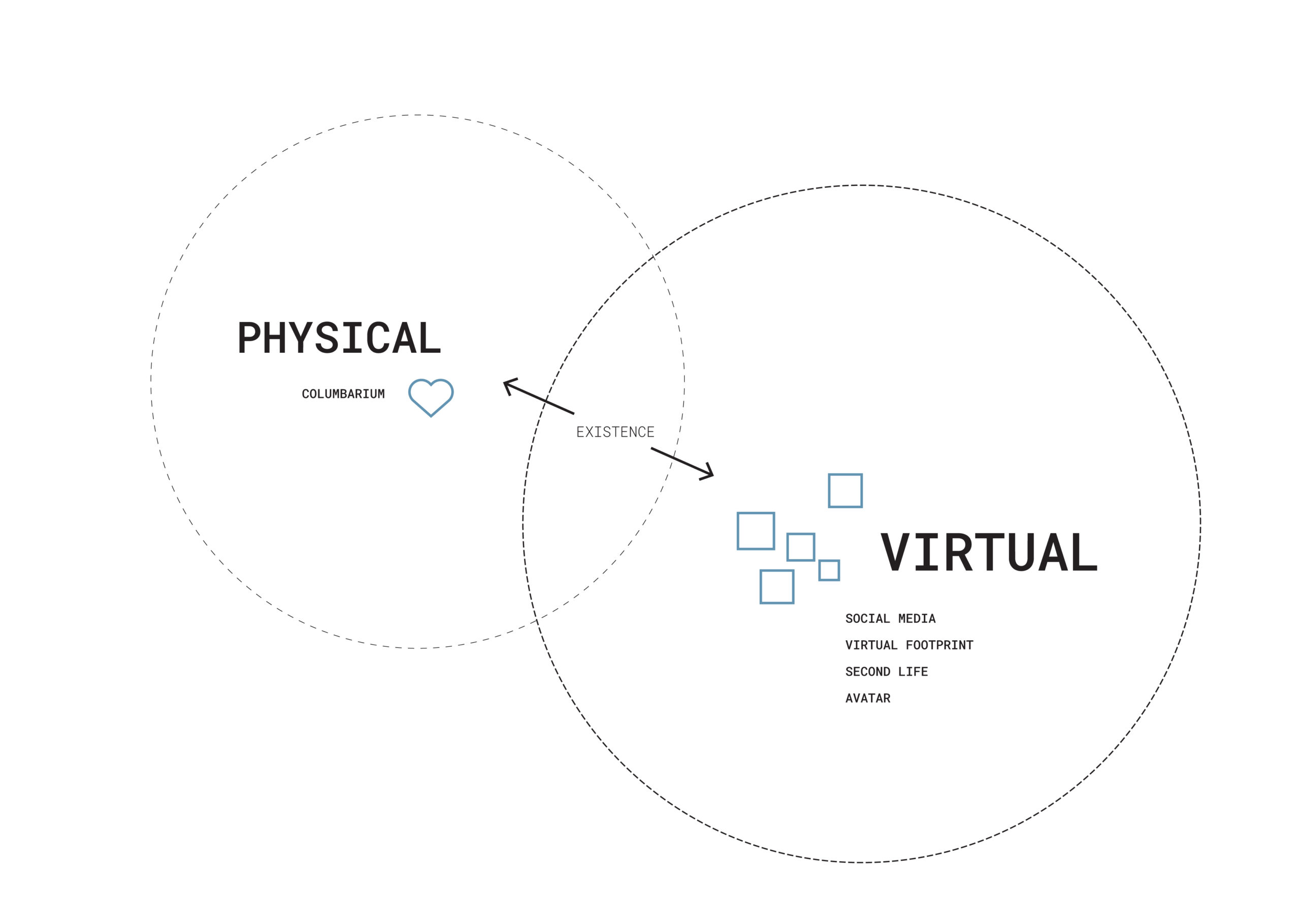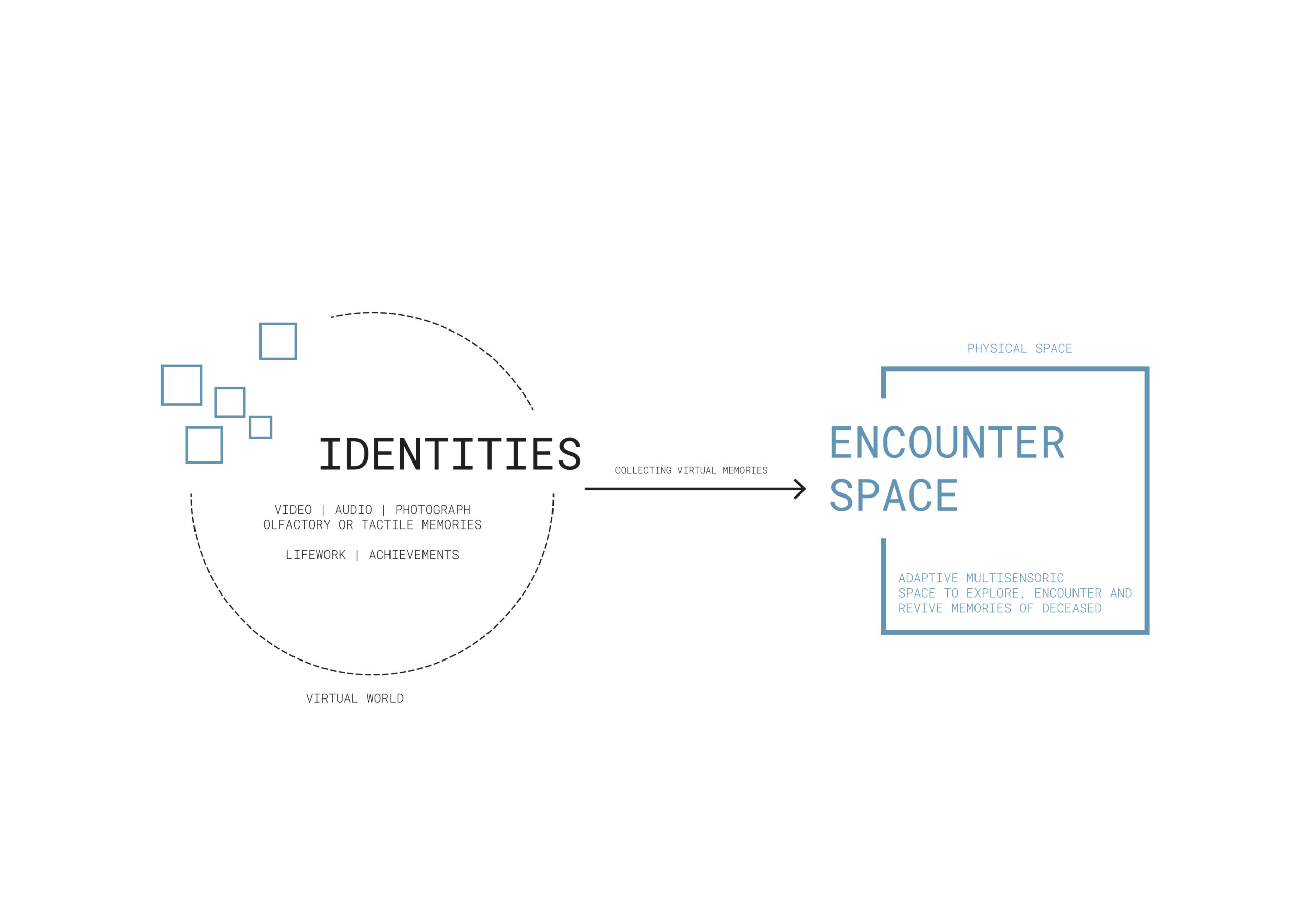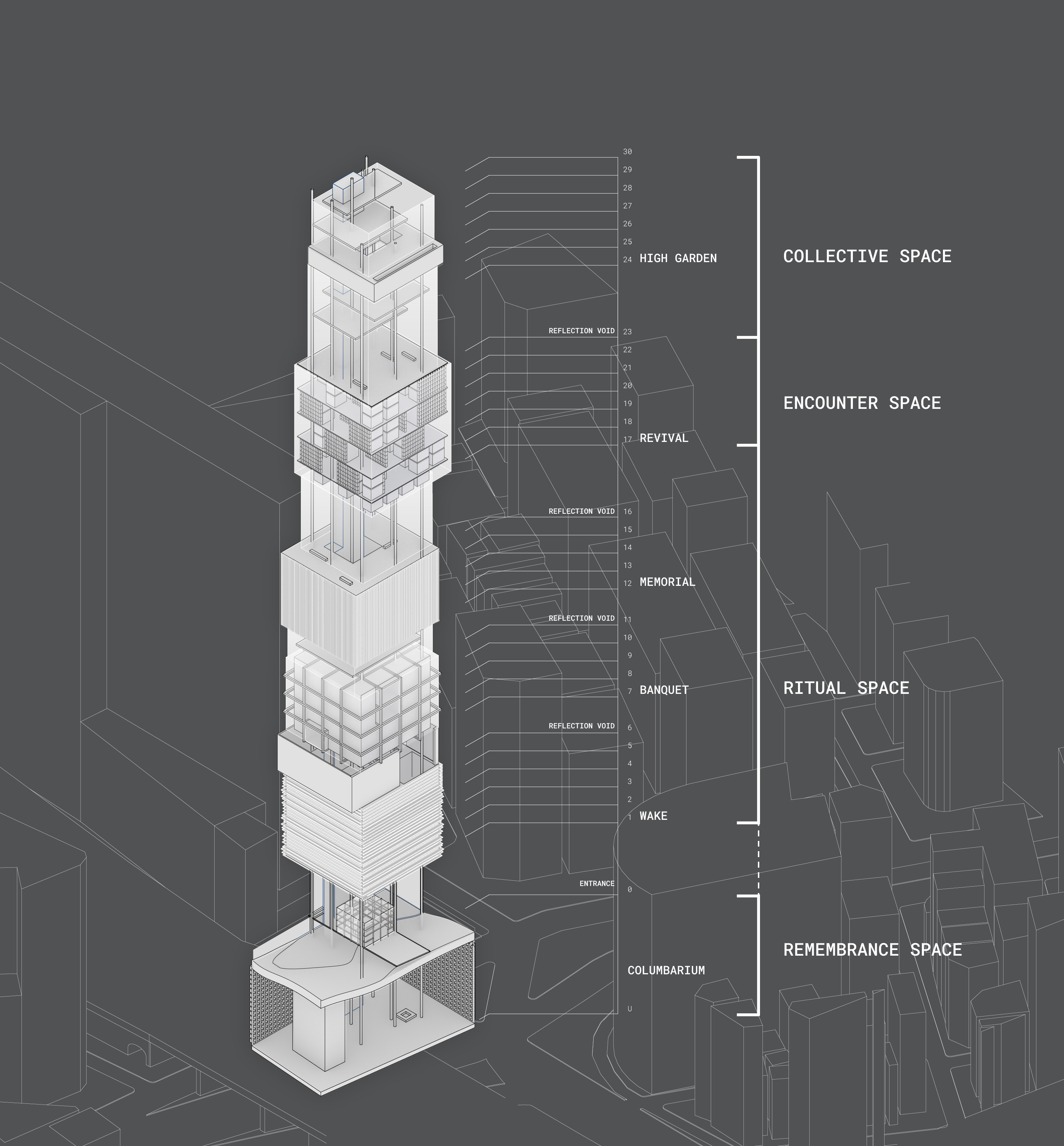Graveyards around the world are increasingly disappearing from the urban landscape.
In times of increasing egocentrism and superiority in virtual space or social media, the topic of death is increasingly vanishing from the digital world.
In Tokyo, however, there is another phenomenon. Speculation on land has led to temple properties being bought up and sold again as cemeteries without taxes for ten times the original price. (meigi-gashi)
Today, this leads to the fact that small hidden and walled cemeteries are located between residential buildings or commercial buildings all over the city.
This design tries to understand death as the natural thing it is and to return it to the focus of the living. At the same time, a place of mourning in memory can also be a place of silence and encounter. In addition to the ritual as an important identity-forming bridge to the past, the design also provides space for future forms of remembrance in the digital age.
